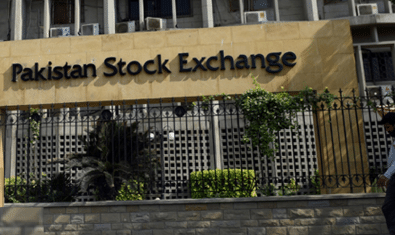Federal Government has planned to set up 29 special economic zones (SEZs) under the China-Pakistan Economic Corridor (CPEC), it is learned.
These special economic zones will be located at different places of all four provinces — to be identified by provincial governments themselves — said annual reports issued by State Bank of Pakistan.
Once implemented, these SEZs will be able to enhance country’s productive capacity; expand its exports base; and provide a major impetus for economic and social development through their backward and forward linkages with the rest of the domestic economy.
These SEZs may prove to be a turning point for the industrial sector in the country, as economic zones have played a key role in industrial development in many Asian economies.
So far, Pakistan has lagged behind — as compared to other South Asian peer countries — in exploring the option of SEZs for attracting FDI, promotion of industrialization and economic growth.
Background of Special Economic Zones
The idea of Special Economic Zones is not new, as the first such experiment was implemented in New York in 1937 following the passage of the Free Trade Zone Act by the United States Congress in 1934.
The concept was attractive for other countries as well, as it allowed them to enhance their competitiveness, attract foreign investment and diversify exports.
More importantly, countries were still able to maintain protective barriers and create jobs. Many developing countries, especially in East Asia, used this framework as a policy tool to promote industrialization and economic growth.
Pakistan has also adopted this strategy by creating various industrial estates and export processing zones. A review of country experiences, however, shows that not every economic zone has been successful in delivering on its objectives.
While the most successful zones are found in East Asia and Latin America, the majority of African zones could not replicate this success, despite the technical assistance and funding from donors.
Economic zones in Pakistan also remained largely ineffective in boosting industrial growth, investments, and exports. In this backdrop, the renewed emphasis on this strategy under CPEC is a welcome development, as this would allow Pakistan to learn from the successful experience of China.
In Pakistan, the Special Economic Zone Act 2012 provides the governing structure, allowing both the federal and provincial governments to set up economic zones under various administrative frameworks.
Specifically, SEZ can be entirely led by the government, or can work in collaboration with the private sector (under different modes of public-private partnership), or even operate exclusively through the private sector.
Whatever the arrangement, it is important that both regulatory and administrative bodies should have necessary power, autonomy and available funding. Often, weak administrative bodies established to develop, operate and regulate zones result in lackluster performance by SEZs.
Importance of Provincial Coordination for Effective SEZs
The adequate coordination and effective partnership between governments (local, provincial and federal) and private zone developers is essential. Given that provinces are now formulating their own investment and industrial policies following the 18th Amendment, the need to collaborate for designing coherent policies has become more vital. Deciding location of SEZs is equally important.
The government often has to balance between growth and social development objectives. The first objective favours those SEZ sites that offer easy availability of input (raw material, energy, labour, etc) and access to road and transportation network.
However, selection of already developed areas results in congestion, over-crowding and social unrest. On the other hand, the government can pursue social development objectives by selecting remote areas. The development of such areas requires heavy capital expenditure by the government, and private firms also expect generous incentive packages to offset their location disadvantage. In this context, designing unique incentive structure to attract firms becomes more challenging as benefits offered by SEZs are almost similar.
Incentives For Industries
In any case, since tax incentives impose significant costs on budgets (and they are hard to withdraw), focus should be on regulatory and administrative incentives.
For example, Special Economic Zone authority can enhance the scope of facilities by establishing skill development centres or constructing residential complexes near economic zones. Wherever tax incentives are necessary, they should come with sunset clauses.
The design of incentives also determines the type of industries eligible for inclusion in the economic zones. Applying a general set of incentives allows inclusion of a range of activities, both commercial as well as manufacturing. In any case, industries which already enjoy strong presence in the country (e.g., textiles, household appliance, cement & building material, food processing, sports, leather and surgical items, mineral resources, etc.) would be the most likely candidates for such SEZs.
However, if the country wants to use SEZs as a tool to diversify its industries and exports, the incentive structure should be tailored accordingly. While designing incentives, we should consider that China is in the process of upgrading its industrial base.
This means, not only that some industries could potentially relocate to Pakistan, China would also need semi-processed material for its new and high-tech industry.






















Hum nahe mantay….nah nah nah..
Thank you Raheel Shareef, Go Nawaz Go